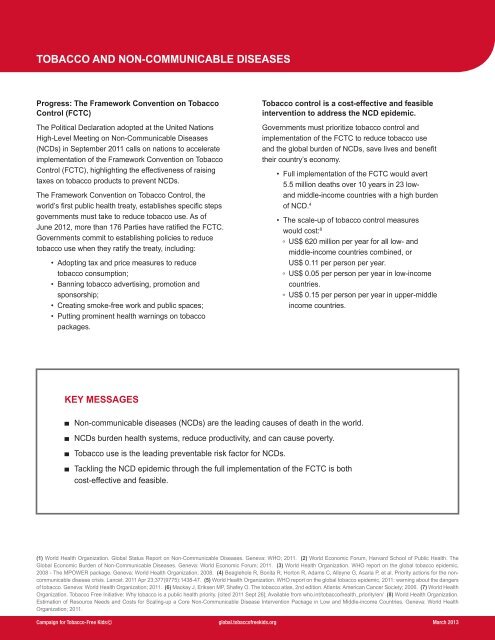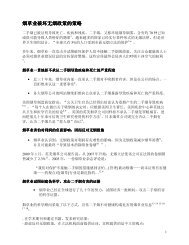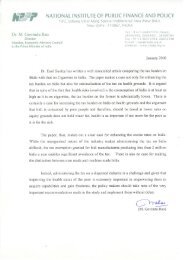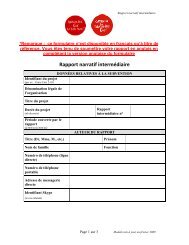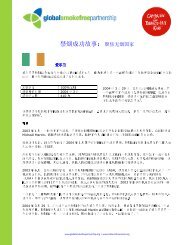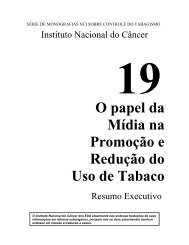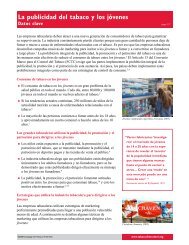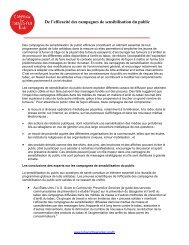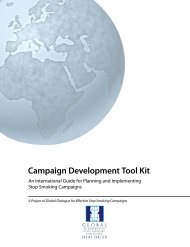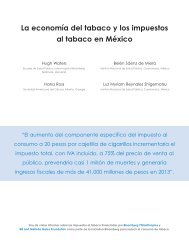TOBACCO AND NON-COMMUNICABLE DISEASES - Campaign for ...
TOBACCO AND NON-COMMUNICABLE DISEASES - Campaign for ...
TOBACCO AND NON-COMMUNICABLE DISEASES - Campaign for ...
You also want an ePaper? Increase the reach of your titles
YUMPU automatically turns print PDFs into web optimized ePapers that Google loves.
<strong>TOBACCO</strong> <strong>AND</strong> <strong>NON</strong>-<strong>COMMUNICABLE</strong> <strong>DISEASES</strong>Progress: The Framework Convention on TobaccoControl (FCTC)The Political Declaration adopted at the United NationsHigh-Level Meeting on Non-Communicable Diseases(NCDs) in September 2011 calls on nations to accelerateimplementation of the Framework Convention on TobaccoControl (FCTC), highlighting the effectiveness of raisingtaxes on tobacco products to prevent NCDs.The Framework Convention on Tobacco Control, theworld’s first public health treaty, establishes specific stepsgovernments must take to reduce tobacco use. As ofJune 2012, more than 176 Parties have ratified the FCTC.Governments commit to establishing policies to reducetobacco use when they ratify the treaty, including:• Adopting tax and price measures to reducetobacco consumption;• Banning tobacco advertising, promotion andsponsorship;• Creating smoke-free work and public spaces;• Putting prominent health warnings on tobaccopackages.Tobacco control is a cost-effective and feasibleintervention to address the NCD epidemic.Governments must prioritize tobacco control andimplementation of the FCTC to reduce tobacco useand the global burden of NCDs, save lives and benefittheir country’s economy.• Full implementation of the FCTC would avert5.5 million deaths over 10 years in 23 lowandmiddle-income countries with a high burdenof NCD. 4• The scale-up of tobacco control measureswould cost: 8◦◦US$ 620 million per year <strong>for</strong> all low- andmiddle-income countries combined, orUS$ 0.11 per person per year.◦◦US$ 0.05 per person per year in low-incomecountries.◦◦US$ 0.15 per person per year in upper-middleincome countries.KEY MESSAGES■■Non-communicable diseases (NCDs) are the leading causes of death in the world.■■NCDs burden health systems, reduce productivity, and can cause poverty.■■Tobacco use is the leading preventable risk factor <strong>for</strong> NCDs.■ ■ Tackling the NCD epidemic through the full implementation of the FCTC is bothcost-effective and feasible.(1) World Health Organization. Global Status Report on Non-Communicable Diseases. Geneva: WHO; 2011. (2) World Economic Forum, Harvard School of Public Health. TheGlobal Economic Burden of Non-Communicable Diseases. Geneva: World Economic Forum; 2011. (3) World Health Organization. WHO report on the global tobacco epidemic,2008 - The MPOWER package. Geneva: World Health Organization; 2008. (4) Beaglehole R, Bonita R, Horton R, Adams C, Alleyne G, Asaria P, et al. Priority actions <strong>for</strong> the noncommunicabledisease crisis. Lancet. 2011 Apr 23;377(9775):1438-47. (5) World Health Organization. WHO report on the global tobacco epidemic, 2011: warning about the dangersof tobacco. Geneva: World Health Organization; 2011. (6) Mackay J, Eriksen MP, Shafey O. The tobacco atlas, 2nd edition. Atlanta: American Cancer Society; 2006. (7) World HealthOrganization. Tobacco Free Initiative: Why tobacco is a public health priority. [cited 2011 Sept 26]; Available from who.int/tobacco/health_priority/en/ (8) World Health Organization.Estimation of Resource Needs and Costs <strong>for</strong> Scaling-up a Core Non-Communicable Disease Intervention Package in Low and Middle-income Countries. Geneva: World HealthOrganization; 2011.<strong>Campaign</strong> <strong>for</strong> Tobacco-Free Kids©global.tobaccofreekids.orgMarch 2013


